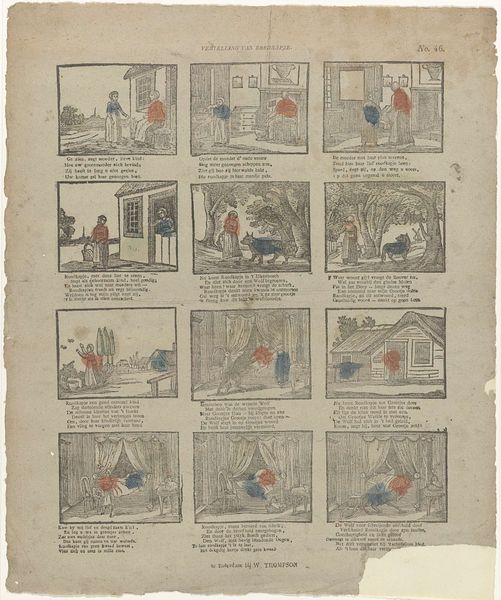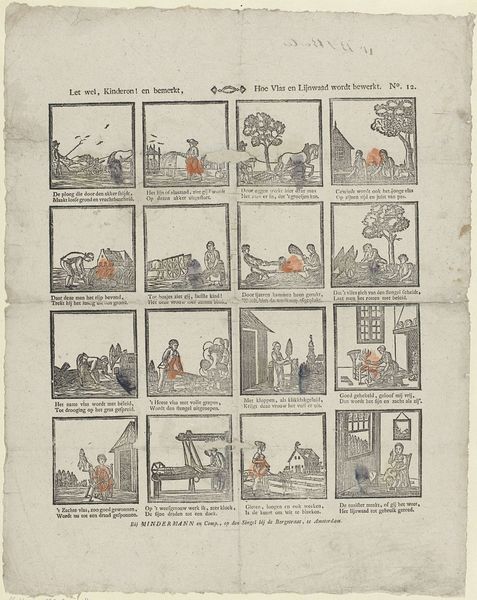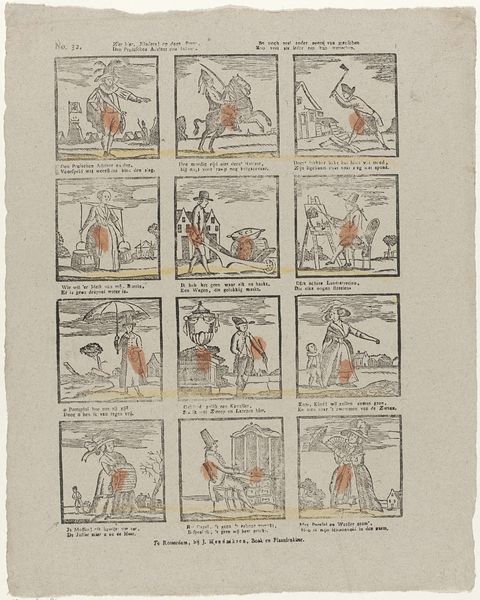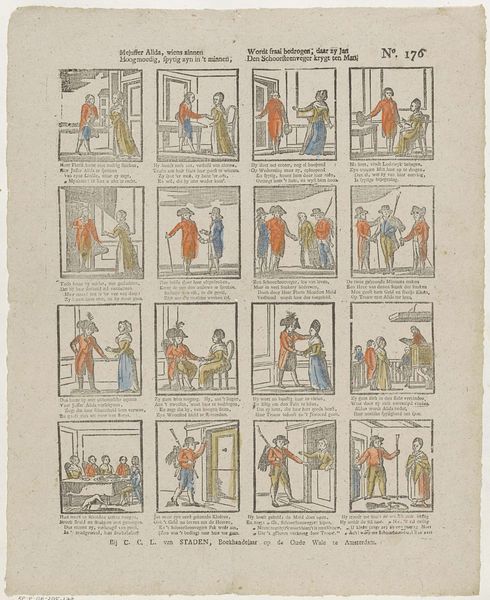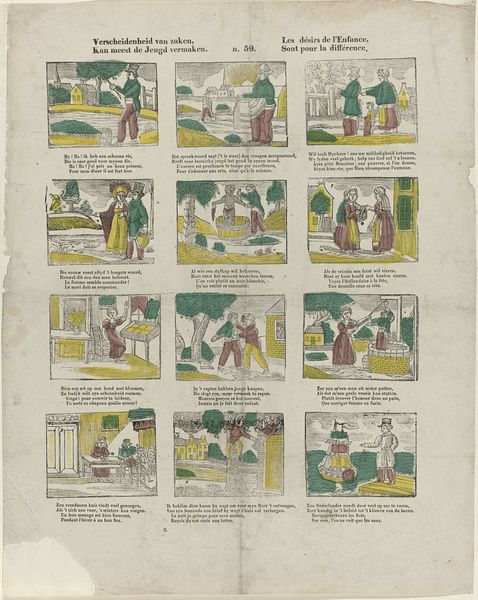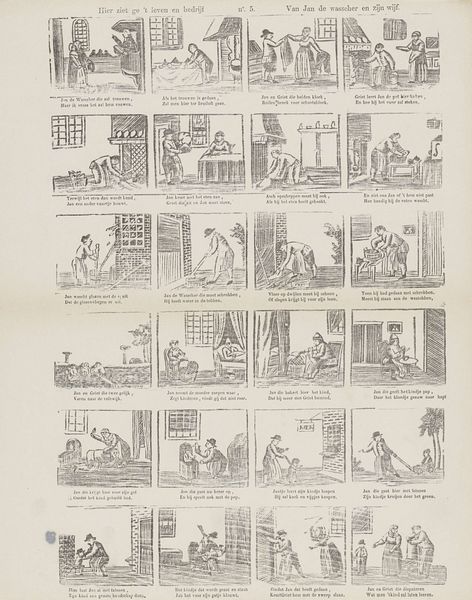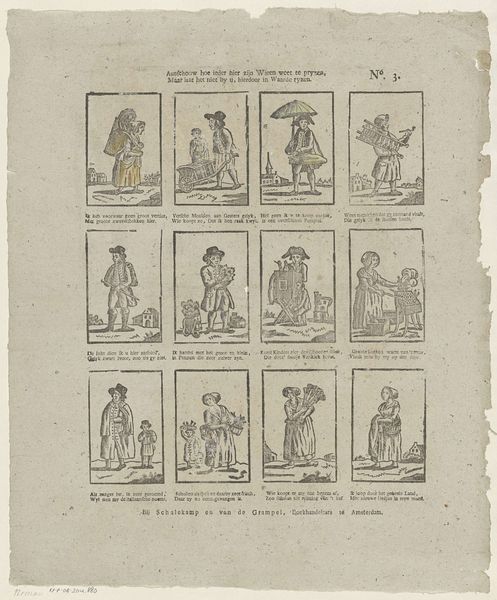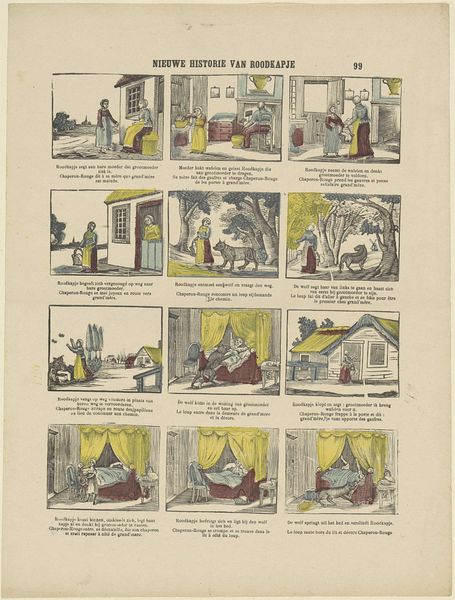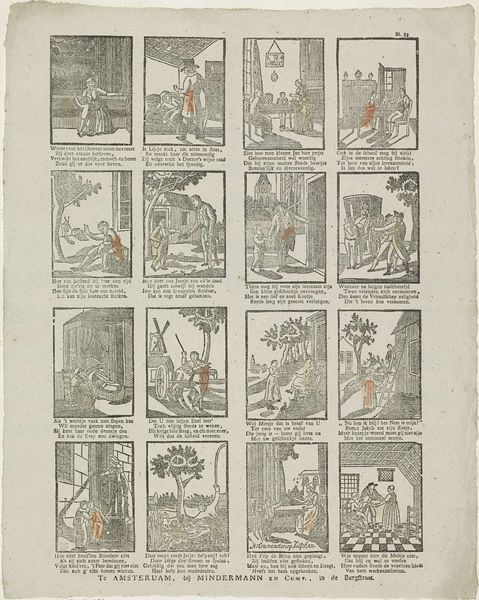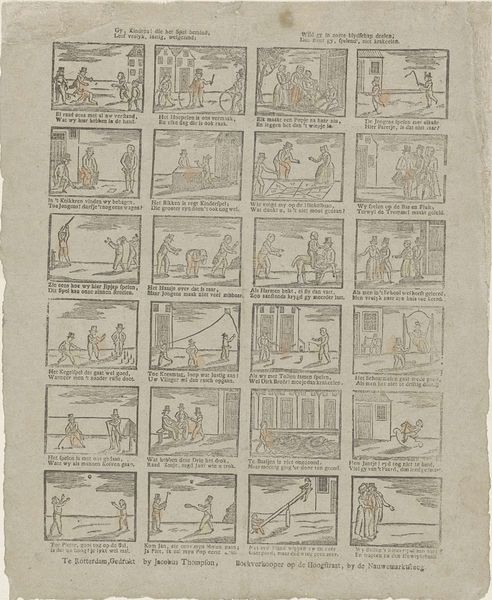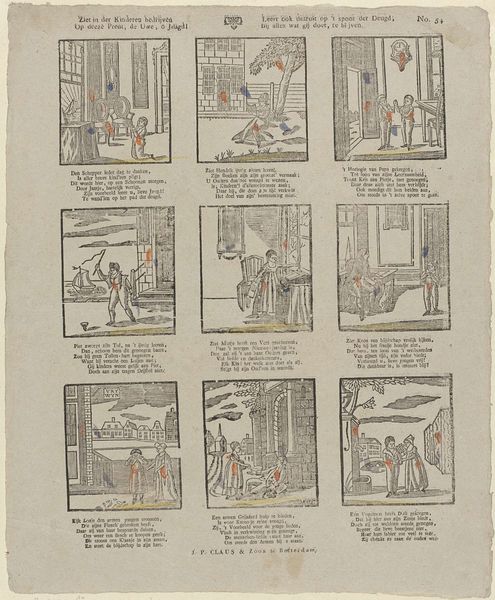
Mejuffer Alida, wiens zinnen / Hoogmoedig, spytig zyn in 't minnen, / Wordt fraai bedrogen, daar zy Jan / Den schoorsteenveger krygt ten man 1715 - 1813
0:00
0:00
graphic-art, print, engraving
#
graphic-art
#
comic strip sketch
#
narrative-art
#
dutch-golden-age
# print
#
figuration
#
comic
#
line
#
genre-painting
#
engraving
Dimensions: height 404 mm, width 326 mm
Copyright: Rijks Museum: Open Domain
Curator: So, we have here “Mejuffer Alida…”, created sometime between 1715 and 1813, a print housed at the Rijksmuseum. It’s presented as a sort of sequential narrative, almost like a proto-comic strip. The whole thing has a somewhat satirical feel. How do you interpret this work? Editor: The first thing I notice is that it seems very critical of societal expectations regarding class and marriage. Are you considering the materials used to create this artwork – the engraving itself? Curator: Absolutely. Consider the economics of printmaking at the time. This wasn't high art meant for a wealthy patron. Engravings like these were relatively inexpensive, produced almost industrially by workshops like that of Erven Weduwe Cornelis Stichter, whose name appears on it. It speaks to a burgeoning market of printed material reaching a wider audience. What kind of story do you think such materials could produce? Editor: So, because this was relatively inexpensive to produce, that suggests that its critique was aimed towards, and possibly consumed by, a less affluent, perhaps even a working-class audience? Curator: Precisely. This print then isn't just depicting a narrative of class disparity, it's participating in a broader cultural discourse. What does it mean when a chimney sweep ends up marrying a “Mejuffer"? Are we to consider labor conditions here as part of the composition of work and its subject matter? Editor: That completely shifts my perspective. The act of mass production through engraving gives this piece a critical, almost subversive edge that I hadn't considered before. Thank you. Curator: Indeed. By examining the materials and the means of its production, we uncover layers of meaning often missed in more traditional art historical approaches.
Comments
No comments
Be the first to comment and join the conversation on the ultimate creative platform.
